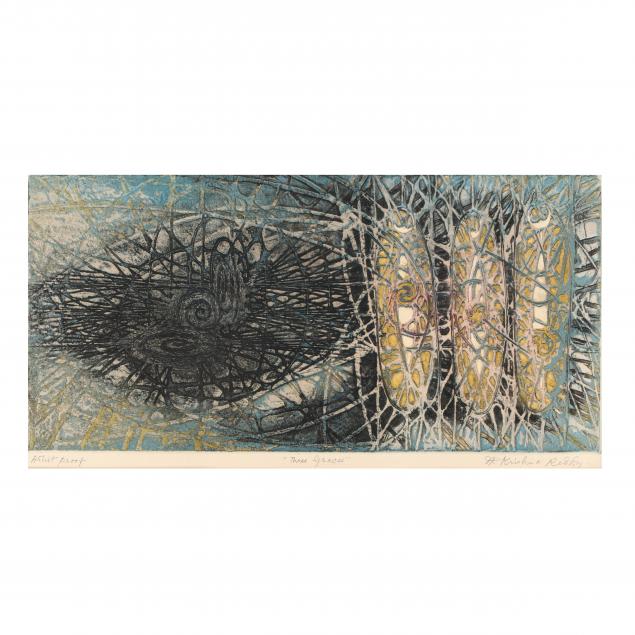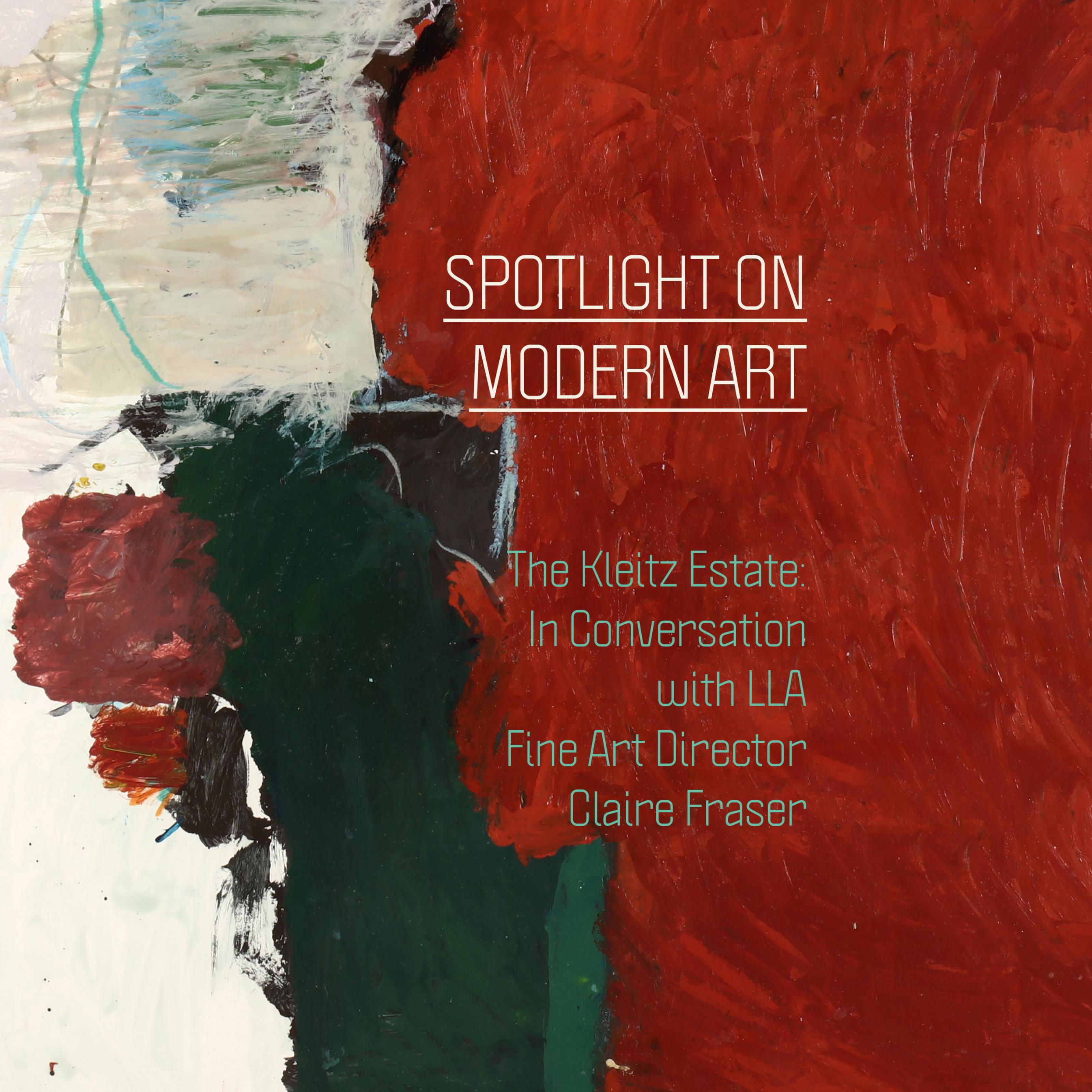
The art collection of the late Edward & Violet Kleitz of Cary, North Carolina is a strong representation of modern art from the mid- to late-20th century. Art was the backdrop of the couple's life, and was the focal point of the Kleitzs' home. They collected a number of artists whose work has been featured in exhibitions at, or is in the permanent collection of, major museums like the San Francisco Museum of Modern Art and the Seattle Art Museum. For our Important Fall Auction, in which the Kleitzs' art was offered, we spoke to Leland Little Fine Art Director Claire Fraser about the highlights of the collection.
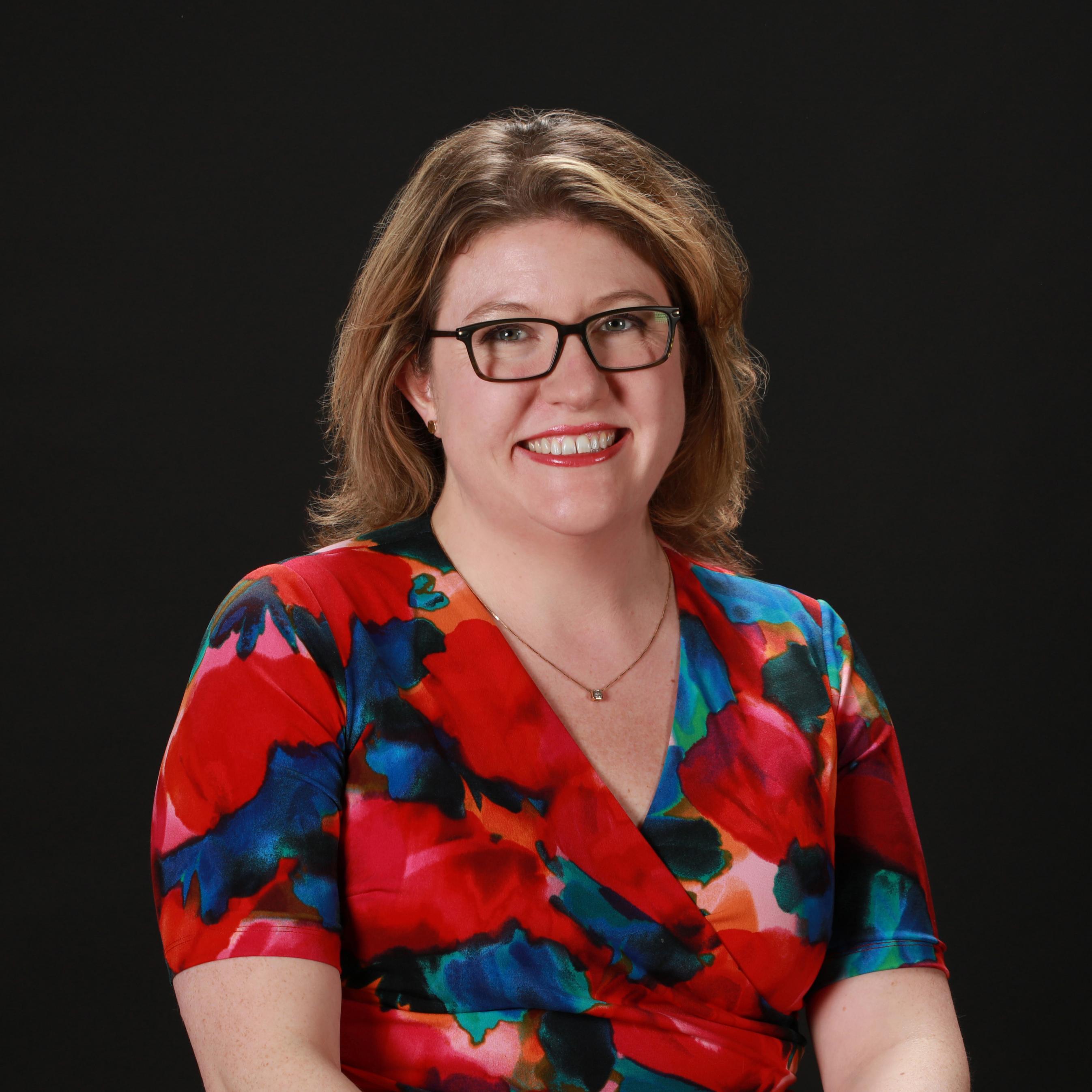
Claire Fraser, Director, Fine Art
LLA: What would you say is the focus of this collection?
CF: The Kleitzs bought most of their art while they were living in the San Francisco Bay Area, and so most of the collection is focused on West coast artists, and beyond that Asian art, from India and Japan.
LLA:Which pieces stand out to you?
CF: My personal favorite in the collection is the Paul Horiuchi collage, (Lot 211, Maple in the Snow).
CF: The Kleitzs bought most of their art while they were living in the San Francisco Bay Area, and so most of the collection is focused on West coast artists, and beyond that Asian art, from India and Japan.
LLA:Which pieces stand out to you?
CF: My personal favorite in the collection is the Paul Horiuchi collage, (Lot 211, Maple in the Snow).
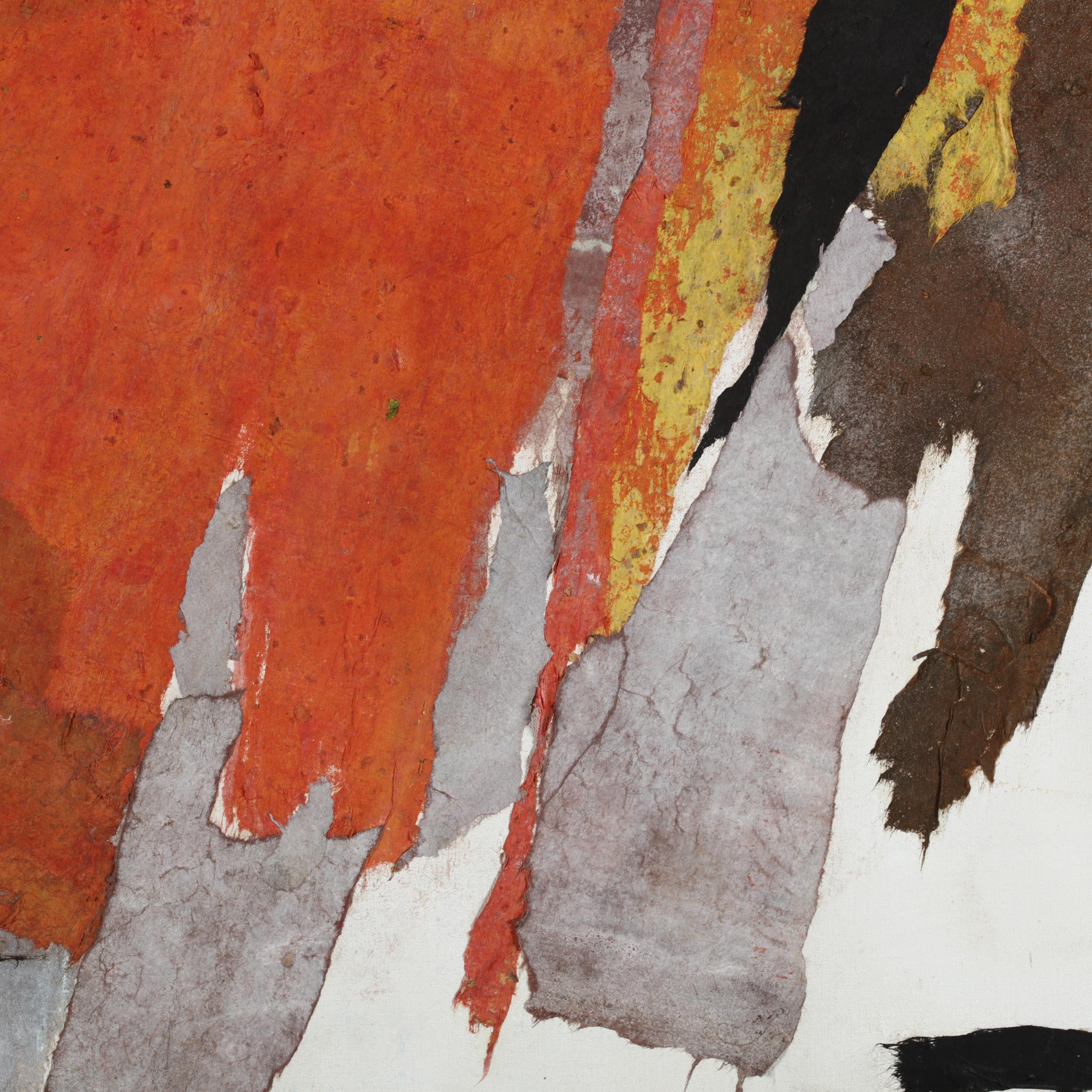
Detail from Maple in the Snow by Paul Horiuchi (American, 1906-1999)
LLA:That piece struck us, too, because it’s not immediately evident that it’s a collage, even when you see it in person.
CF: Yes, it’s a very special piece, and the story of Horiuchi as an artist is also really interesting. He immigrated to the United States from Japan in the 1920’s as a teenager and spent his early years here working on the railroad in Wyoming. He was a self-taught artist, and when he moved to Seattle in 1946 he switched his focus from traditional painting to collage, which is the medium for which he’s best known.
CF: Yes, it’s a very special piece, and the story of Horiuchi as an artist is also really interesting. He immigrated to the United States from Japan in the 1920’s as a teenager and spent his early years here working on the railroad in Wyoming. He was a self-taught artist, and when he moved to Seattle in 1946 he switched his focus from traditional painting to collage, which is the medium for which he’s best known.
The other painting that really stands out is the Alden Mason, Lot 212, from his Burpee Garden Series. It’s a series of paintings he made with oil paint that he had thinned almost to the consistency of watercolor. He applied the paint to the canvas with rags and brooms and house painting brushes. The series is named after the Burpee Seed Company catalog that Mason remembered from his childhood on a farm. It’s good medium-size work from the series, which are becoming more rare on the market.
LLA: Did the Kleitzs collect most of these works contemporaneously to their creation?
CF: Yes, they were really on the cutting edge of contemporary art, and they were working with galleries that were also early adopters of trends that would become more solidified later. For example, lots 209 (Soichiro Tomioka (Japanese, 1922-1994), Snow Country) and 210 (Masando Kito (Japanese, b. 1937), "a different" #26) are from the Triangle Gallery in San Francisco, which was one of the first galleries in the United States to start bringing in art from China and Japan in the 1960s and 70s. So for instance, Tomioka had a work featured in a Japanese painting exhibit at MOMA in 1966, and the Kleitzs purchased this painting in 1971.
LLA: Did the Kleitzs collect most of these works contemporaneously to their creation?
CF: Yes, they were really on the cutting edge of contemporary art, and they were working with galleries that were also early adopters of trends that would become more solidified later. For example, lots 209 (Soichiro Tomioka (Japanese, 1922-1994), Snow Country) and 210 (Masando Kito (Japanese, b. 1937), "a different" #26) are from the Triangle Gallery in San Francisco, which was one of the first galleries in the United States to start bringing in art from China and Japan in the 1960s and 70s. So for instance, Tomioka had a work featured in a Japanese painting exhibit at MOMA in 1966, and the Kleitzs purchased this painting in 1971.
LLA: The Kleitz collection includes a fair amount of sculpture as well as paintings. What can you tell us about the Kleitzs’ three dimensional works?
CF: They were also trendsetters when it came to collecting sculpture, always buying things that spoke very much of the moment when they were made, like the stabile by Jerome Kirk (Proud Bird II, Lot 216). Bruce Beasley (Lot 217, Amycus and Lot 218, Carlingott II) was also just coming onto the scene when the Kleitzs were collecting. Acquisitions by major museums like the Guggenheim and the Museum of Modern Art in New York helped launch him in the 1960s and 70s.
CF: They were also trendsetters when it came to collecting sculpture, always buying things that spoke very much of the moment when they were made, like the stabile by Jerome Kirk (Proud Bird II, Lot 216). Bruce Beasley (Lot 217, Amycus and Lot 218, Carlingott II) was also just coming onto the scene when the Kleitzs were collecting. Acquisitions by major museums like the Guggenheim and the Museum of Modern Art in New York helped launch him in the 1960s and 70s.
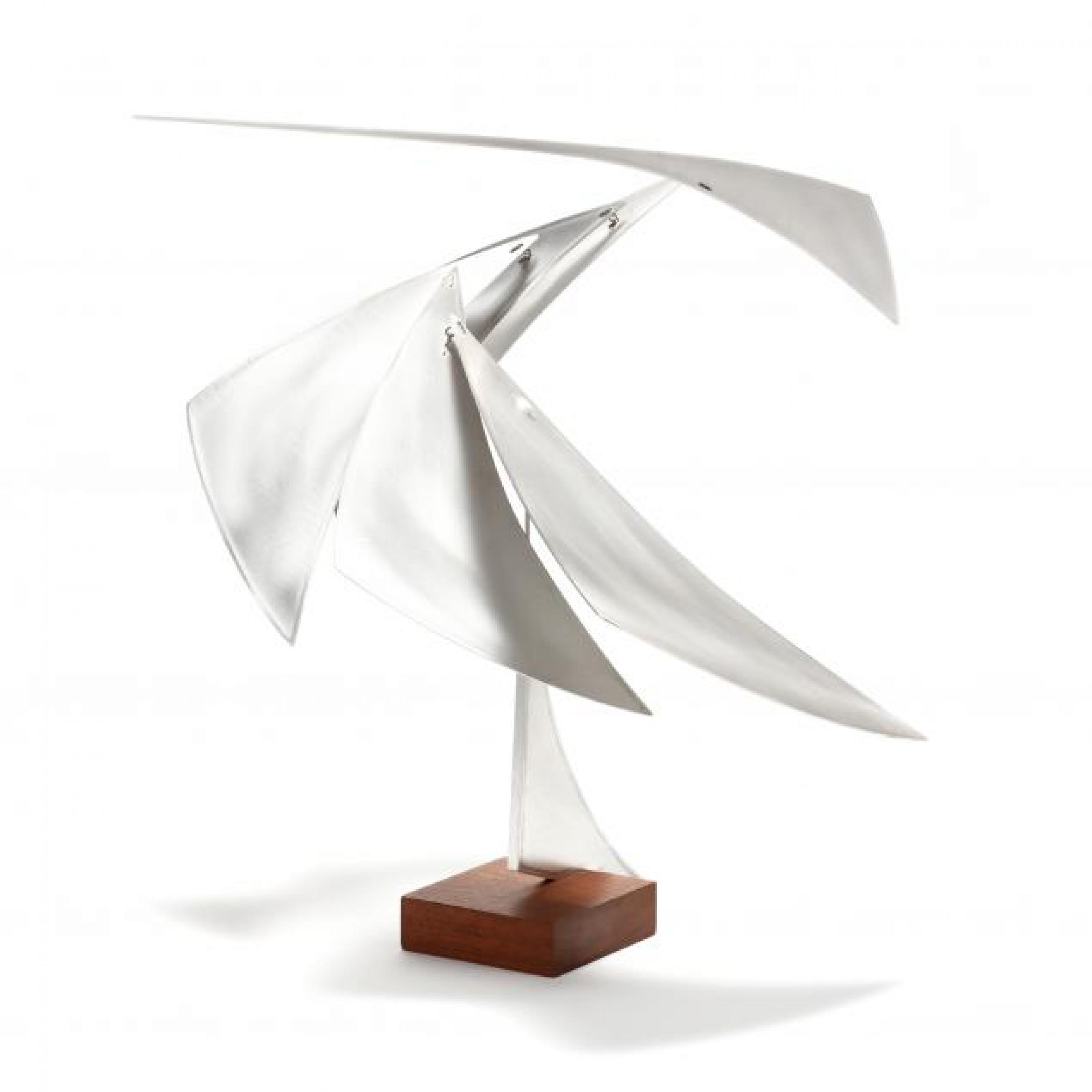
Jerome Kirk (American, 1923-2019), Proud Bird II (Stabile)
LLA: Most of the three-dimensional works are bronzes, but they also had ceramics.
CF: Yes, those were purchased from a gallery in Arizona that was one of the top galleries in the country for American crafts.
LLA: Beyond the evident importance of the art itself, what do you find notable about the Kleitz collection?
CF: I was really impressed with their record-keeping. I have not seen anything like it really. They had really good relationships with the dealers they were buying from, and we have all the correspondence between the Kleitzs and their dealers.
LLA: And how does that record-keeping augment the collection?
CF: It builds really solid provenance for the work. We can see what year they bought it, and from which dealer, and that helps authenticate the piece and build its history.
CF: Yes, those were purchased from a gallery in Arizona that was one of the top galleries in the country for American crafts.
LLA: Beyond the evident importance of the art itself, what do you find notable about the Kleitz collection?
CF: I was really impressed with their record-keeping. I have not seen anything like it really. They had really good relationships with the dealers they were buying from, and we have all the correspondence between the Kleitzs and their dealers.
LLA: And how does that record-keeping augment the collection?
CF: It builds really solid provenance for the work. We can see what year they bought it, and from which dealer, and that helps authenticate the piece and build its history.
Featured Items From The Estate of the Late Edward & Violet Kleitz, Cary, North Carolina
View the full results from the Kleitz Estate here.


